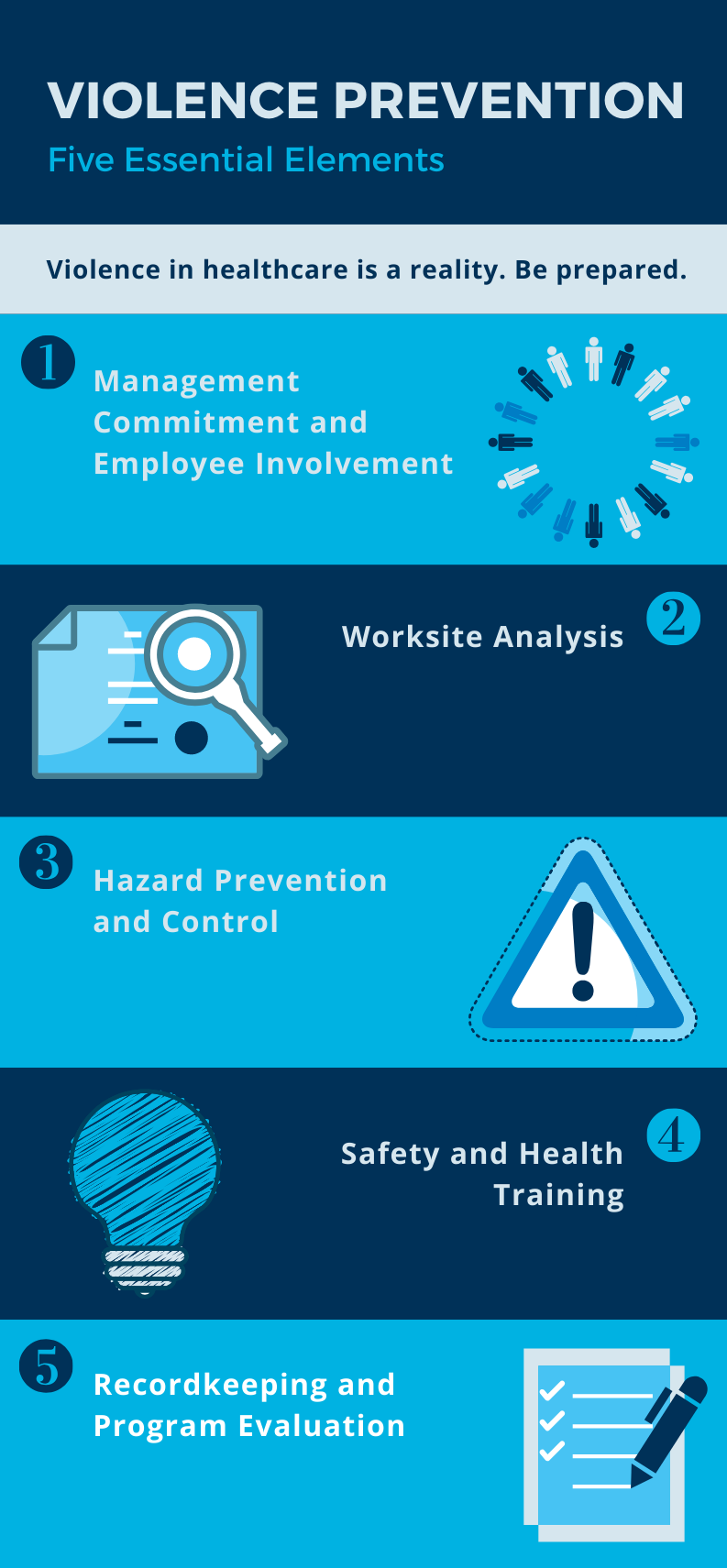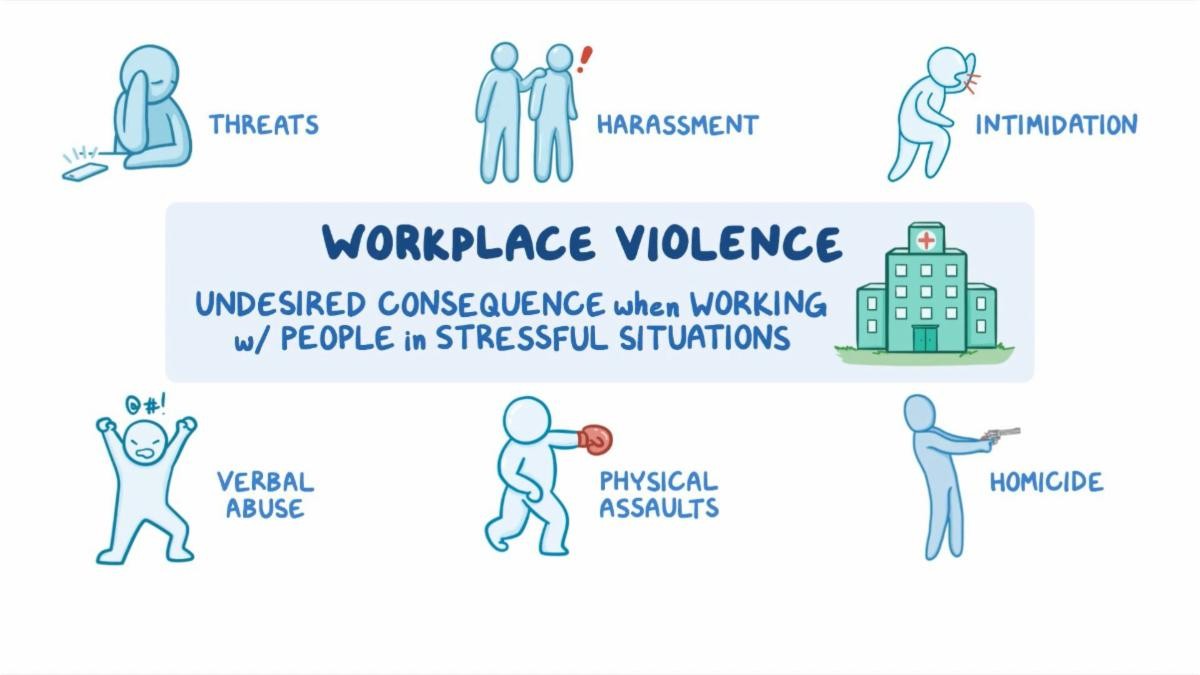Just how to Review the Performance of Your California Workplace Violence Prevention Initiatives
Just how to Review the Performance of Your California Workplace Violence Prevention Initiatives
Blog Article
Examining the Influence of Office Society on the Success of Violence Prevention Efforts and Staff Member Well-Being
The crossway of workplace society, physical violence avoidance initiatives, and worker health warrants mindful examination, as these components jointly affect organizational success. A culture that prioritizes open interaction and emotional safety and security can equip employees to identify and report possible risks, consequently promoting an atmosphere for both psychological health and wellness and effective violence avoidance methods. The subtleties of exactly how these aspects engage remain intricate and diverse. Comprehending the particular mechanisms at play can disclose essential understandings that might educate future campaigns and drive significant modification within companies. What underlying characteristics could be affecting these end results?
Recognizing Workplace Culture
Often, workplace society serves as the foundation for worker communications and total business actions. It incorporates the shared values, beliefs, and practices that shape the environment in which workers run.

Organizations must examine their current office society to determine locations for improvement. This assessment can entail studies, emphasis teams, or one-on-one discussions. By acknowledging the cultural characteristics at play, organizations can implement targeted interventions that promote a much safer and extra respectful work setting, inevitably reducing the threat of violence in the workplace.
Function of Staff Member Well-Being
A favorable work environment culture not just influences organizational behavior but additionally substantially impacts staff member well-being. When employees feel valued and appreciated, their general job satisfaction rises, bring about boosted psychological and psychological health and wellness. This, subsequently, promotes a feeling of belonging and loyalty, which is essential for long-lasting involvement and productivity.
In addition, a supportive social environment advertises open interaction, enabling employees to look for and share worries assistance without concern of preconception. This visibility is essential in attending to issues associated with tension, burnout, and interpersonal problems, which can detrimentally impact both individual health and business harmony.
Furthermore, companies that focus on staff member health typically see lowered absenteeism and turn over prices. Healthy and balanced staff members are more resilient and better equipped to deal with work environment obstacles, adding to a more efficient and steady labor force.
Spending in staff member wellness via efforts such as health cares, psychological health and wellness sources, and adaptable working arrangements can create a positive feedback loophole, improving both private fulfillment and cumulative organizational success (california workplace violence prevention). Eventually, prioritizing employee well-being is not just an ethical imperative; it is a critical strategy that profits the entire organization
Violence Avoidance Techniques
Carrying out efficient violence avoidance techniques is important for keeping a healthy and secure office setting. Organizations has to embrace an extensive approach that consists of policy advancement, staff member training, and aggressive interaction. Establishing clear workplace physical violence policies is the primary step, guaranteeing that all employees recognize acceptable actions and the repercussions of offenses.
Educating programs should be made to inform staff members regarding recognizing warning indicators of prospective physical violence, dispute resolution strategies, and emergency action procedures. Regular drills and simulations can improve check my source preparedness, promoting a society of understanding and liability.
Additionally, fostering open communication networks encourages workers to report concerns without fear of revenge. This can be facilitated with confidential reporting systems or routine responses sessions. Promoting an encouraging workplace culture that values respect and inclusivity can substantially mitigate the danger of physical violence.
Organizations needs to likewise engage in normal evaluations of their workplace society and violence prevention techniques, adapting them to evolving needs. By focusing on these techniques, business not only protect their staff members but also boost overall well-being, inevitably adding to a more effective workplace.
Gauging Social Effect
Gauging the influence of workplace society on physical violence avoidance efforts is vital for comprehending the efficiency of current approaches these details and recognizing locations for renovation - california workplace violence prevention. To achieve this, organizations should employ a multifaceted approach that combines measurable and qualitative techniques. Assessments and studies can gather information on staff member understandings of work environment inclusivity, security, and support systems, while event records provide concrete evidence of physical violence events and their context within the business culture
In addition, emphasis groups and meetings can expose much deeper insights into staff members' attitudes, experiences, and beliefs bordering violence prevention initiatives. Evaluating this qualitative data aids organizations to pinpoint cultural staminas and weaknesses that might either facilitate or hinder reliable prevention approaches. Moreover, benchmarking versus sector standards permits for comparative analysis, aiding organizations gauge their efficiency relative to peers.

Producing Helpful Atmospheres
Frequently cultivating a supportive setting within the office is necessary for effective physical violence avoidance. Such environments empower staff members to connect openly concerning their experiences and problems, consequently identifying possible concerns before they rise. A society of assistance boosts depend on amongst employee, urging partnership and positive analytic.
To create an encouraging setting, organizations must prioritize training programs that focus on problem resolution, psychological knowledge, and energetic listening. These skills furnish employees to manage social relationships constructively, decreasing the probability of misconceptions that can lead to physical violence - california basics workplace violence prevention. Furthermore, carrying out mentorship programs can supply staff members with advice and reassurance, contributing to their overall well-being
Management plays a crucial duty in forming an encouraging work environment culture. By modeling understanding behavior and showing a dedication to worker welfare, leaders set a tone that encourages others to do the same. Normal feedback devices, such as confidential surveys, can also assist determine employee sentiment and highlight areas for enhancement.
Eventually, an encouraging setting not just mitigates the danger of violence yet additionally improves worker morale, job satisfaction, and productivity, enhancing the organization's commitment to cultivating a growing and risk-free workplace.
Verdict
A favorable workplace society substantially influences both physical violence prevention initiatives and staff member health. By cultivating open communication and urging the coverage of worries, organizations can enhance mental health and work complete satisfaction among staff members. Additionally, an encouraging society strengthens the efficiency of physical violence prevention strategies by addressing and advertising the timely recognition of caution signs. Eventually, cultivating such a setting functions as a crucial foundation for effective interventions and contributes to the overall success of the organization.
The intersection of workplace society, physical violence prevention initiatives, and employee health warrants careful assessment, as these elements jointly affect organizational success. A society that prioritizes open communication and psychological safety and security can equip employees to determine and report possible risks, therefore cultivating an atmosphere helpful to both psychological health and effective physical violence prevention techniques.A favorable office culture not only affects organizational behavior yet likewise considerably influences worker health. Surveys and analyses can gather information on employee assumptions of workplace support, safety and security, and inclusivity systems, while case reports give concrete proof of physical violence occurrences and their context within the organizational society.
A positive office culture considerably affects both violence prevention efforts and staff member well-being.
Report this page